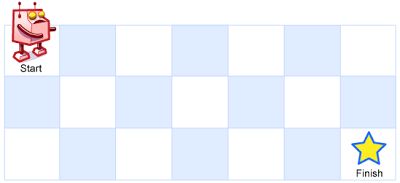Leetcode 易错题整理(二)40. 45. 46. 47. 49. 56. 62. 63.
40. 组合总和 II
给定一个候选人编号的集合
candidates和一个目标数target,找出candidates中所有可以使数字和为target的组合。
candidates中的每个数字在每个组合中只能使用 一次 。**注意:**解集不能包含重复的组合。
示例 1:
输入: candidates = [10,1,2,7,6,1,5], target = 8, 输出: [ [1,1,6], [1,2,5], [1,7], [2,6] ]
组合总和1:没有重复数组元素,为了保证结果不重复,我们只要保证下次递归时访问的数大于等于上次递归时的数即可。
组合总和2:有重复元素,每个元素只用一遍即可。
最开始我想的就是每次用完一个数组元素,下次递归把这个数组元素移除掉,用一个少一位的数组继续递归即可。后来发现没有那么简单。
for(int i=pre;i<candidates.length;i++){
if(target>=candidates[i]){
List<Integer> newList=new ArrayList<>(tempList);
newList.add(candidates[i]);
int[] temp=new int[len-1];
int cnt=0;
for(int j=0;j<len;j++){
if(j!=i)temp[cnt++]=candidates[j];
}
subFunc(resList,newList,temp,target-candidates[i],len-1,i);
}
}
这样的代码会出现一个问题:循环检测到第一个数字1,然后使用去掉1的数组进行递归;然后循环下一轮碰到的还是数字1,也是用去掉一个1的数组进行递归,实际上是两个重复的结果。可见这位大佬的图片参考:
其实很简单解决,我们只需要加一句话:当此轮循环数和上一轮循环数相同的时候跳过本轮循环即可。
完整代码:
class Solution {
public void subFunc(List<List<Integer>> resList,List<Integer> tempList, int[] candidates,int target, int len, int pre){
if(target<0)return;
if(target==0){resList.add(tempList);return;}
else {
for(int i=pre;i<candidates.length;i++){
if(target>=candidates[i]){
if(i>0&&candidates[i]==candidates[i-1])continue;
List<Integer> newList=new ArrayList<>(tempList);
newList.add(candidates[i]);
int[] temp=new int[len-1];
int cnt=0;
for(int j=0;j<len;j++){
if(j!=i)temp[cnt++]=candidates[j];
}
subFunc(resList,newList,temp,target-candidates[i],len-1,i);
}
}
}
}
public List<List<Integer>> combinationSum2(int[] candidates, int target) {
List<List<Integer>> resList=new ArrayList<>();
Arrays.sort(candidates);
subFunc(resList,new ArrayList<>(),candidates,target,candidates.length,0);
return resList;
}
}
45. 跳跃游戏 II
给定一个长度为
n的 0 索引整数数组nums。初始位置为nums[0]。每个元素
nums[i]表示从索引i向前跳转的最大长度。换句话说,如果你在nums[i]处,你可以跳转到任意nums[i + j]处:
0 <= j <= nums[i]i + j < n返回到达
nums[n - 1]的最小跳跃次数。生成的测试用例可以到达nums[n - 1]。
使用贪心算法。
思路
如果某一个作为 起跳点 的格子可以跳跃的距离是 3,那么表示后面 3 个格子都可以作为 起跳点。 11. 可以对每一个能作为 起跳点 的格子都尝试跳一次,把 能跳到最远的距离 不断更新。如果从这个 起跳点 起跳叫做第 1 次 跳跃,那么从后面 3 个格子起跳 都 可以叫做第 2 次 跳跃。
所以,当一次 跳跃 结束时,从下一个格子开始,到现在 能跳到最远的距离,都 是下一次 跳跃 的 起跳点。 31. 对每一次 跳跃 用 for 循环来模拟。
跳完一次之后,更新下一次 起跳点 的范围。
在新的范围内跳,更新 能跳到最远的距离。
记录 跳跃 次数,如果跳到了终点,就得到了结果。图解
作者:Ikaruga
链接:https://leetcode.cn/problems/jump-game-ii/solutions/36035/45-by-ikaruga/
来源:力扣(LeetCode)
著作权归作者所有。商业转载请联系作者获得授权,非商业转载请注明出处。
class Solution {
public int jump(int[] nums) {
int end=0;
int step=0;
int maxLocation=0;
for(int i=0;i<nums.length-1;i++){
maxLocation=Math.max(maxLocation,i+nums[i]);
if(i==end){
step++;
end=maxLocation;
}
}
return step;
}
}
每次我们在 i 到 end 范围内找一下看最远能跳到哪里,最远能跳到的地方作为下一个区间的 end。
46. 全排列
给定一个不含重复数字的数组
nums,返回其 所有可能的全排列 。你可以 按任意顺序 返回答案。示例 1:
输入:nums = [1,2,3] 输出:[[1,2,3],[1,3,2],[2,1,3],[2,3,1],[3,1,2],[3,2,1]]
全排列算法:回溯。
class Solution {
public List<List<Integer>> permute(int[] nums) {
int len=nums.length;
List<List<Integer>> resList=new ArrayList<>();
List<Integer> outList=new ArrayList<>();
for(int num:nums){
outList.add(num);
}
backtrack(resList,outList,0,nums.length);
return resList;
}
public void backtrack(List<List<Integer>> resList, List<Integer> outList, int first, int len){
if(first==len){
resList.add(new ArrayList<Integer>(outList));
}
for(int i=first; i<len;i++){
Collections.swap(outList, first, i);
backtrack(resList, outList, first+1, len);
Collections.swap(outList, first, i);
}
}
}
47. 全排列 II
出现了重复的元素。
示例 1:
输入:nums = [1,1,2] 输出: [[1,1,2], [1,2,1], [2,1,1]]
也比较简单。从结论上来说,for 循环做交换的时候,这个位置的重复数字只能交换过来一次,后面就不要交换这个数字过来了。
Set<Integer> set=new HashSet<>();
for(int i=first; i<len;i++){
if(!set.contains(outList.get(i))){
set.add(outList.get(i));
Collections.swap(outList, first, i);
backTrack(resList,outList,first+1,len);
Collections.swap(outList, first, i);
}
}
49. 字母异位词分组
给你一个字符串数组,请你将 字母异位词 组合在一起。可以按任意顺序返回结果列表。
字母异位词 是由重新排列源单词的所有字母得到的一个新单词。
示例 1:
输入: strs = ["eat", "tea", "tan", "ate", "nat", "bat"] 输出: [["bat"],["nat","tan"],["ate","eat","tea"]]
这种就是利用哈希表来唯一存储映射关系。重点在于如何划分唯一键值。
一种方法是:把字符串排序后可以作为唯一键值。比如 aet, ant。
另一种方法是,不同字符串组合各个字母出现的个数也不同,可以把“字母”+”出现次数“+”字母“……组合成一个字符串作为键值。这个优点在于不用排序每一个字符串,我们可以弄一个长度26的空数组,每次遍历一个字符串把其中的字母出现情况统计到数组中,最后从 a-z 遍历数组统计。这里我只尝试了方法一。
class Solution {
public List<List<String>> groupAnagrams(String[] strs) {
Map<String, List<String>> hashMap=new HashMap<>();
for(String str:strs){
char[] array=str.toCharArray();
Arrays.sort(array);
String key=new String(array);
if(hashMap.containsKey(key)){
hashMap.get(key).add(str);
}
else {
List<String> list=new ArrayList<>();
list.add(str);
hashMap.put(key,list);
}
}
return new ArrayList<List<String>>(hashMap.values());
}
}
56. 合并区间
以数组
intervals表示若干个区间的集合,其中单个区间为intervals[i] = [starti, endi]。请你合并所有重叠的区间,并返回 一个不重叠的区间数组,该数组需恰好覆盖输入中的所有区间 。示例 1:
输入:intervals = [[1,3],[2,6],[8,10],[15,18]] 输出:[[1,6],[8,10],[15,18]] 解释:区间 [1,3] 和 [2,6] 重叠, 将它们合并为 [1,6].
思路:首先数组按第一个元素排序,然后每个数组和后面数组比较,如果他的第二个元素大于后面数组的第一个元素,则这两个数组可以合并,选取这两个数组第二个元素更大的作为新的第二个元素(结束地址)。
对我来说最重要的是 List to Array 的写法。
class Solution {
public int[][] merge(int[][] intervals) {
Arrays.sort(intervals, new Comparator<int[]>(){
public int compare(int[] interval1, int[] interval2){
return interval1[0]-interval2[0];
}
});
int ptr=0;
int[] curArray=new int[2];
int len=intervals.length;
List<int[]> resList=new ArrayList<>();
while(ptr<len){
curArray[0]=intervals[ptr][0];
curArray[1]=intervals[ptr][1];
while(ptr<len-1&&curArray[1]>=intervals[ptr+1][0]){
curArray[1]=curArray[1]>intervals[ptr+1][1]?curArray[1]:intervals[ptr+1][1];
ptr++;
}
int[] temp=new int[2];
temp[0]=curArray[0];
temp[1]=curArray[1];
resList.add(temp);
ptr++;
}
return resList.toArray(new int[resList.size()][]);
}
}
62. 不同路径
一个机器人位于一个
m x n网格的左上角 (起始点在下图中标记为 “Start” )。机器人每次只能向下或者向右移动一步。机器人试图达到网格的右下角(在下图中标记为 “Finish” )。
问总共有多少条不同的路径?
示例 1:
输入:m = 3, n = 7 输出:28
思路:公式计算:(m+n-2)!/(m-1)!/(n-1)!,即为:横竖一共走 m+n-2 步,无视 m-1 n-1 步内部顺序,找出所有可能组合。
不过直接套公式 long 也会超长度。我们可以在一个公式里完成乘除运算。
class Solution {
public int uniquePaths(int m, int n) {
long res=1;
for(int i=m,j=1;j<n;i++,j++){
res=res*i/j;
}
return (int)res;
}
}
63. 不同路径 II
在上一题基础上,路径中会添加几个障碍物。数组元素=0是可走的路,数组元素=1是障碍物。
我一开始以为障碍物只有一个,因此只写了没有障碍物的情况-(出发点走到有障碍物的情况*障碍物走到终点的情况)。
多个障碍物解法:动态规划,其实到每个位置 [i,j] 的可能性都是到 [i,j-1] 的可能性+到 [i-1,j] 的可能性。到障碍物点可能性=0.
class Solution {
public int uniquePathsWithObstacles(int[][] obstacleGrid) {
int arrLen=obstacleGrid.length;
int eleLen=obstacleGrid[0].length;
int[] f=new int[eleLen];
f[0]=obstacleGrid[0][0]==1?0:1;
for(int i=0;i<arrLen;i++){
for(int j=0;j<eleLen;j++){
if(obstacleGrid[i][j]==1){f[j]=0;
continue;}
if(j-1>=0)f[j]+=f[j-1];
}
}
return f[eleLen-1];
}
}


